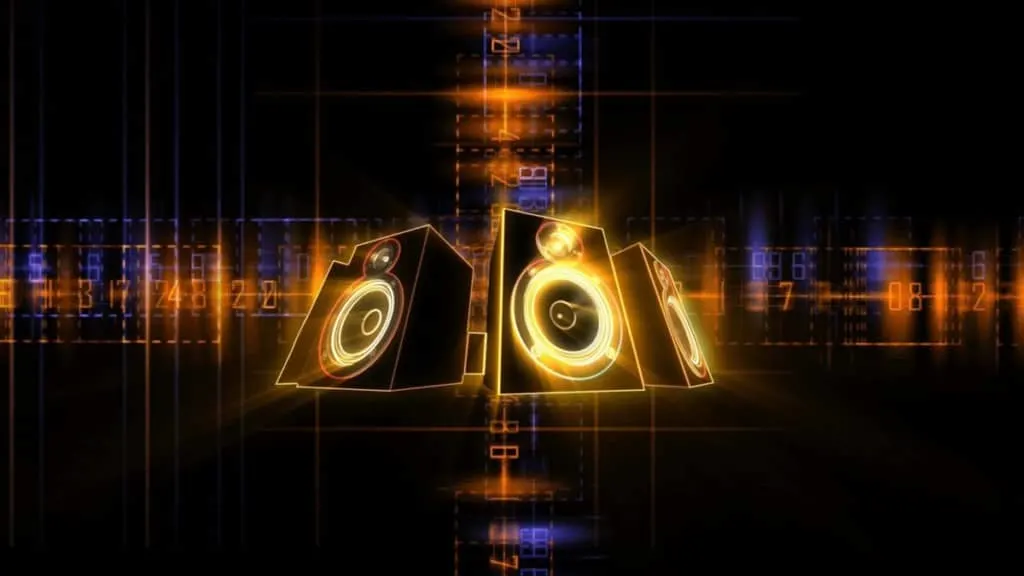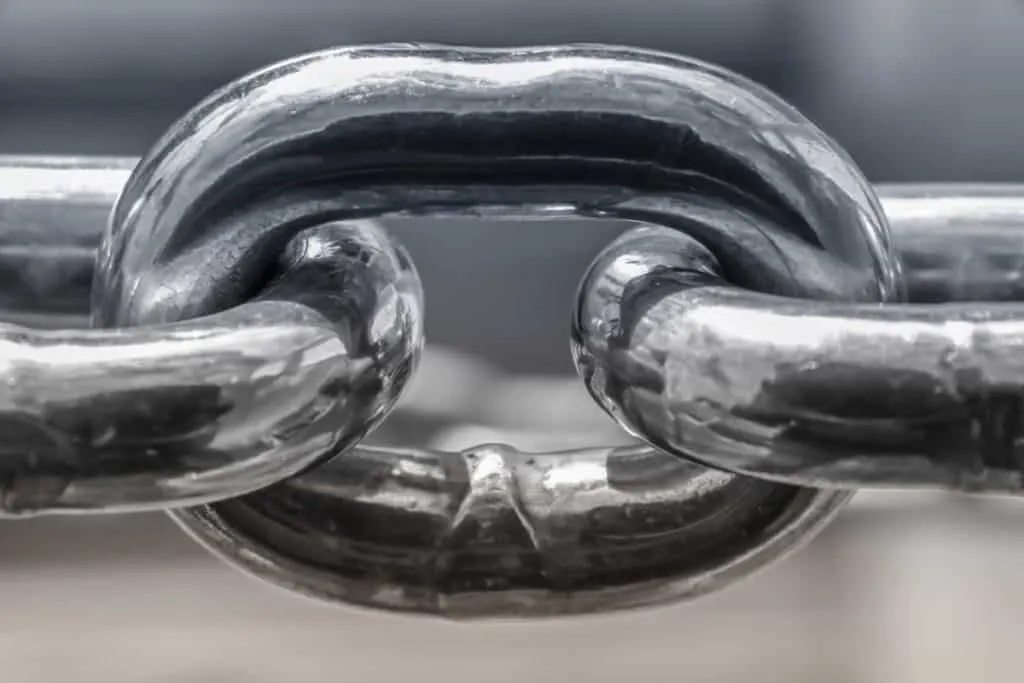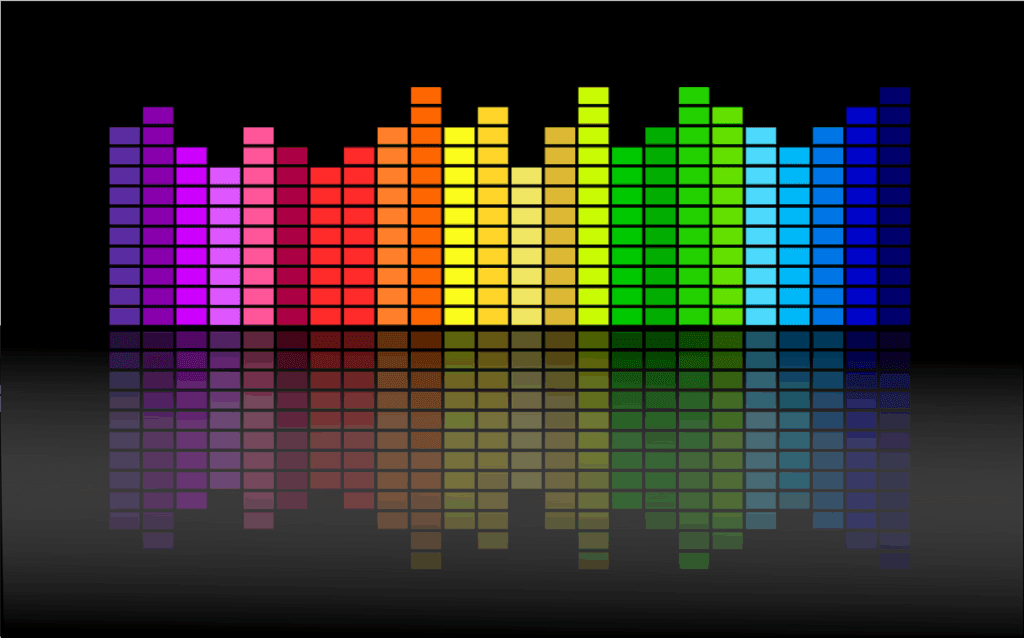Whether it’s for home audio or to power an arena, daisy-chaining loudspeakers is a very common practice in the world of audio.
As with any and everything, it takes making some mistakes when you are starting to get good at it. I’m going to try to put my 20+ years of audio experience to work for you in this very post. Hopefully, you’ll avoid many of my rookie mistakes.
So, can you daisy-chain loudspeakers?
You can daisy chain as many loudspeakers as you like if your setup is a power amplifier and then a bunch of passive speakers. How many speakers you can daisy chain will depend on your amplifier’s impedance capabilities. If your speakers set up is made with powered speakers, you can simply connect one to the audio outputs of the source and then use the “extension” output to go to the next.
Are you ready to read the full story behind one of audio’s oldest tricks? Keep on reading and get ready to master a new skill.

What Does “Daisy Chain” Mean?
The first time I ever saw anyone daisy-chaining something, it was in a Marshall ad back in the day.
In the picture, you could clearly see Jimi Hendrix playing and his Marshall heads daisy-chained one to the next. This was the beginning of what we now call “a wall of sound”.
Later on, when I took my first steps in the world of professional audio, I witnessed daisy-chaining very often.
The technique is very simple: you feed the first element in the chain and that element will feed the rest. The principle applies to sound and power. For example, it is very common to see it among musicians, to plug the first pedal into the power outlet and daisy chain from it.
Indeed, Boss features the PSM-5 as a part of their line under the name “Power Supply and Master Switch” allowing you to daisy chain all your pedals after it. In audio, it is exactly the same, but instead of electricity, it delivers an audio signal.
Daisy Chain For Active Speakers
Let’s get started with the easiest alternative. As long as each of the components of the chain is powered, you can daisy chain as many speakers as you like. This goes for all kinds from satellites to woofers. The steps are very easy:
1. First of all, connect the audio output from the source to the input of your active speaker. For example, the audio source could be a mixer, a computer, or an audio player. Make sure you do not send audio to active speakers from an amplified source or else you’ll be in trouble.
2. Search in the back panel of your powered speaker that receives the audio for an output called “extension” or “through”. It should be either a Speakon connector, XLR, or a ¼” cable. Make sure the first speaker is working properly and plays the audio from the source.
3. Connect the next speaker in the chain from the “extension” or “through” of the first one and into the input of the next. You can repeat steps two and three with as many powered speakers as you like.
I have written an article on speakon cables. You can read it here.
Active Speakers Daisy Chain FAQs
Let’s address the three most common questions I got on this topic one by one.
Can I daisy chain an active speaker to a passive speaker?
Yes, you can daisy chain any speaker that has an “extension” or “through” outlet on some models to a passive speaker. If the model is compatible with this practice, just run a cable from that connection to the input of the next speaker and you’ll feed audio and power to it.
Bear in mind that you’ll be using the same power source for both speakers and the volume of the first will drop drastically to fuel the passive one. If the model is compatible with this practice, it will be stated on the box and/or the manual.
Check out my article on active and passive speakers here.
Can I daisy chain speakers to subwoofers?
If all of the speakers involved feed from the same audio source, then the answer is yes. Bear in mind that if the source has got an internal crossover for lower frequencies, it might have a dedicated subwoofer output.
Other than that, it works like any active speaker, and you can indeed daisy chain several subwoofers together. A good example of this is the front bottom of any large stage where you find all the subwoofers being fed by a single audio source (the mixer console) and daisy-chained among each other.

Can You Daisy Chain In Stereo?
The answer here depends on what your system is running. If you are working with a true stereo system and have different audio coming from both sides, then you need two separate daisy chains. This is very common in large stages where you have the line array models hanging from both sides.
They are all active speakers, daisy-chained between each other. Instead of running seven or eight premium-class cables to feed each module, you just run a long one and daisy chain them together. That way you have a true stereo image coming out with only two cables from the main outputs of the mixer.
Always bear in mind that the same cable takes audio from one speaker to the next. Attaching many speakers this way, you’ll achieve many copies of the same audio and not stereo or surround because it is information being repeated rather than receiving a distinct sound or frequency range.
Daisy Chain For Passive Speakers
Ok, that was the easy part. Putting together a big rig of daisy-chained active speakers is relatively easy. When you are doing it with passive speakers there is a major difference called impedance.
Let´s talk impedance
Impedance is how much resistance a system offers to an electrical current.
That alone doesn’t tell us anything, does it? Well, let’s add some more: as a general rule, the higher the impedance, the higher the audio quality, and the more power we need to generate volume. If you’ve ever tried to plug high-end, audiophile headphones into an iPhone, I’m sure you heard everything at very low volume. Your iPhone is not powerful enough to fuel high-impedance headphones.
Why is impedance important for daisy-chaining some speakers?
Because when we daisy chain passive speakers, we change the impedance of the system. For example, if we have two 8-ohm speakers and daisy chain those, we’ll get them to work on 4-ohms each. This will depend on the next item we need to discuss.

Daisy Chain In Series Or Parallel?
Daisy-chaining passive speakers require us to know which is the lowest and the highest impedance permitted by the power amplifier we are using the output from. This might be in the manual or, sometimes, written on the output itself so you don’t make any mistakes.
Let’s look at an example with two 8-ohm speakers, which is the most common impedance in the market today.
Series
To plug speakers in series, you need to have some tools and connect between their positive and negative ports. What’s important to know is that when you do daisy chain speakers in series, they multiply the load and the resulting impedance is, thus, higher.
Using two 8-ohms speakers and connecting them in series will give you a total load of 16 ohms. Your audio source should support this high impedance; make sure before making any connections.
Parallel
The way you daisy chain in parallel is going from the output of one and to the input of the next.
For this to work, your passive speaker (the first in the series) needs to have an output as well as an input. Once you wire them together (one to the next), you’ll get a total load of 4 ohms out of two 8-ohm speakers. This means that daisy-chaining in parallel will divide the impedance by two.
In the case you’d have a couple of 4-ohm speakers, you’ll end up having audio playing in 2 ohms (which is lower than what most audio equipment can stand).
You can check this video for a series/parallel wiring explanation
Take a look at this video to see a daisy chain being made (regardless of the eighties bandana).
Daisy Chain Final Considerations
Before we reach the conclusion, there are some things you have to bear in mind about daisy-chaining passive speakers:
- You’ll divide power – You will only be using one power source; hence, you’ll be losing power by adding successive items to the line. This is to say, you can’t daisy chain as many speakers as you want without losing power.
- You’ll lower the impedance – As a rule of thumb, the lower the impedance, the higher the volume and the lower the sound quality. For example, playing sub-low frequencies through a subwoofer at 4 ohms is not a problem, but it’s not nice sounding for mids and highs. Also, the more items you add to the list, the further you’ll divide the impedance of the system; make sure your amplifier can handle that.
Conclusion
Daisy-chaining loudspeakers can be a wonderful solution for more than one problem.
You can apply all the knowledge you just acquired at home or in most venues in the world. For example, the appearance of active loudspeakers to use as monitors in stages that could be daisy-chained to cover the whole stage saved professionals from using lots of extra cables.
On the other hand, when doing it at home, you can multiply your subwoofers, for example, to create a more dramatic feel on the lower lows. You can achieve this without using a million cables but only one to daisy chain one to the next.
Finally, you can use it to save some money buying one active and one passive speaker to daisy chain in small venues or even in your rehearsal room or house.
Daisy chain those loudspeakers and sound loud and proud, the world needs passionate musicians and music lovers.
Happy (daisy-chained) music enjoying!
